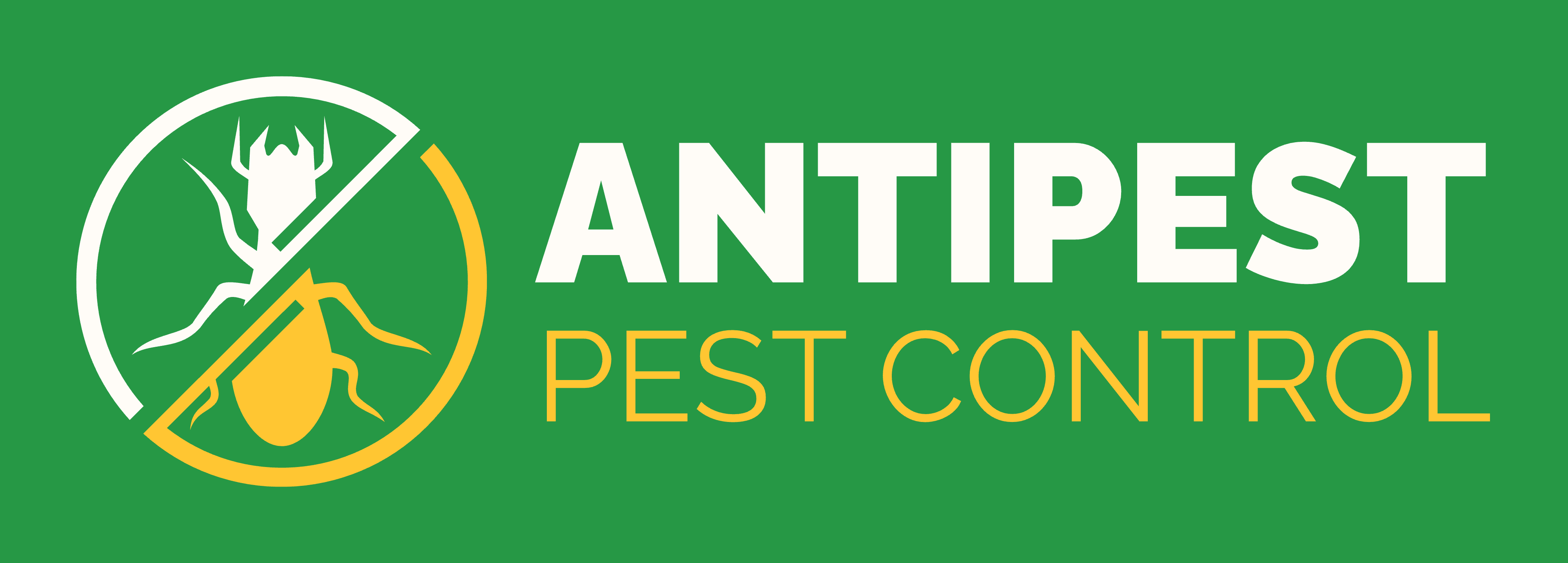Spiders don’t just appear at random; they respond to food, shelter, and climate conditions that favor insect activity and safe hiding spots. Understanding what attracts spiders in the house helps reduce indoor sightings and prevents recurring webs in corners, basements, bathrooms, and around lights. If windows, vents, and door gaps stay unsealed, and moisture or clutter builds, spiders find easy hunting grounds.
Wondering why the same rooms get webs every week, or why they show up after rain? The answers lie in what attracts spiders in the house and the simple steps that remove their incentives.
Table of Contents
Why Understanding Spider Attraction Matters?
Before diving into details, let’s pause to understand why asking what attracts spiders in the house is so important. Many homeowners think of arachnids merely as nuisances. However, their presence often reveals much bigger truths about household hygiene, moisture, and even unnoticed insect problems.
Spiders don’t just wander randomly; they thrive where conditions are favorable. By recognizing the factors drawing them inside, you gain control over your living space. It’s like reading signs left behind by nature about what’s happening in your environment.
What Attracts Spiders in the House?
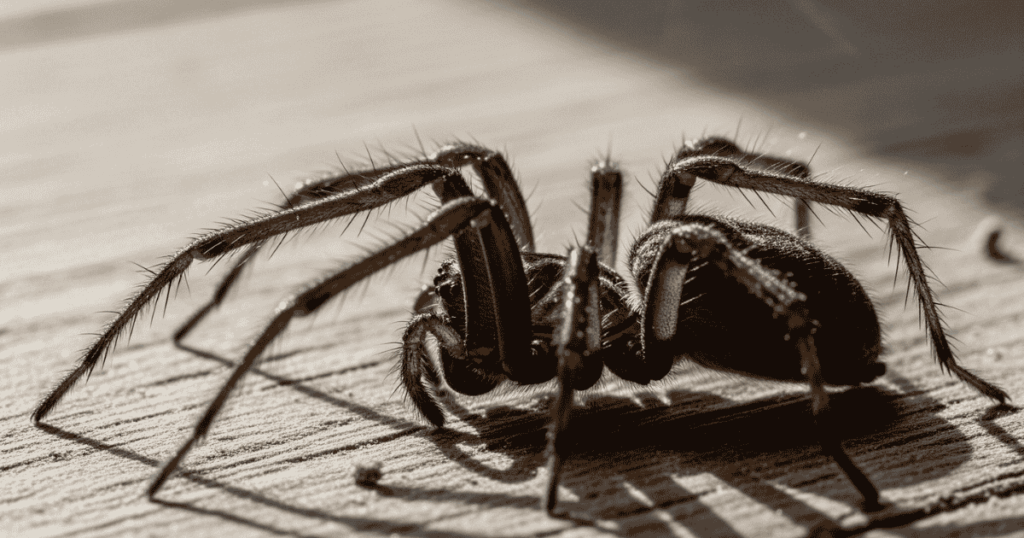
Spiders are driven inside for survival needs, food, shelter, warmth, and sometimes mating. Below we’ll detail these factors in depth.
Food Sources Inside the Home
Where there are insects, spiders will follow. If you’re struggling with mosquitoes, flies, or cockroaches, you’ve essentially rolled out a welcome mat for spiders. A home rich in insect activity answers directly to the question: what attracts spiders in the house, because they come seeking a buffet.
Common indoor pests that attract spiders:
- Flies
- Moths
- Cockroaches
- Mosquitoes
- Ants
Table: Pest Presence vs Spider Activity
| Pest Type | How It Attracts Spiders | Common Areas Found |
| Flies | Main food source | Kitchens, windows |
| Moths | Available at night | Closets, bedrooms |
| Cockroaches | Indicate poor hygiene | Kitchens, basements |
| Mosquitoes | Easy prey | Bathrooms, corners |
| Ants | Consistent movement | Pantries, cupboards |
In other words, eliminating these pests indirectly eliminates spider interest in your home.
Warmth and Comfortable Indoor Climate
Spiders are cold-blooded creatures. Seasonal changes drive them indoors, especially in colder months. So, part of what attracts spiders in the house is the simple comfort of your climate-controlled air.
They love quiet, less-disturbed areas such as attics and basements because:
- The indoor temperature remains stable.
- Low visibility makes them secure from threats.
- Humidity in certain corners reflects their natural habitat.
Moisture and Water Sources
Moisture is another strong magnet for spiders. Damp areas create the perfect environment for both their prey and their survival. Bathrooms, basements, and leaky kitchens often serve as spider hotspots.
Key water-related spider attractants include:
- Leaky faucets
- Standing water in sinks or tubs
- Damp basements
- Wet firewood indoors
- Condensation build-up around windows
If you’re wondering what attracts spiders in the house, water-related factors rank higher than many people assume.
Darkness, Clutter, and Sheltered Spots
Clutter is a spider’s paradise. Piles of clothes, books, boxes, or newspapers make excellent hiding spots. They prefer ignored areas like storage rooms because:
- There’s less human activity.
- It offers protection while they weave webs.
- Prey often passes by unnoticed.
Whether it’s under furniture or behind appliances, clutter answers directly to the idea of what attracts spiders in the house.
Entry Points and Accessibility
Even when food, water, and shelter exist indoors, they won’t matter if spiders can’t get inside. Tiny cracks, gaps under doors, open windows, or vents serve as highways into your home.
Tips to limit access:
- Seal crevices around windows.
- Add door sweeps.
- Install fine mesh screens.
- Repair loose siding.
Accessibility complements other attractants, forming the complete picture of what attracts spiders in the house.
Common House Spiders
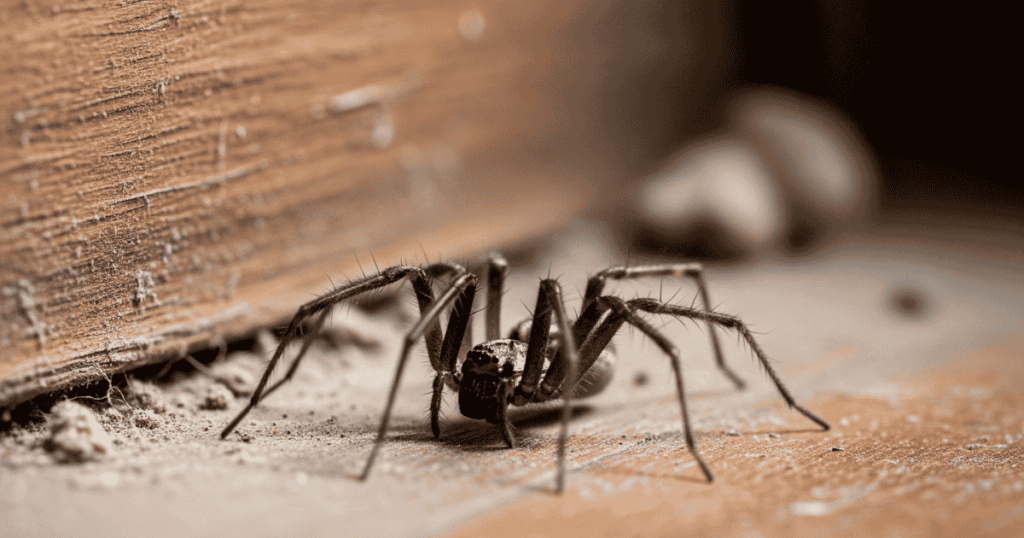
Several species are frequently found inside homes:
- American House Spider (Parasteatoda tepidariorum): Small, round-bodied, brown or gray, and builds messy cobwebs in hidden corners.
- Cellar Spider (Pholcidae): Light tan or gray, thin body with long legs, and creates delicate webs in basements or ceilings, often called “daddy longlegs”.
- Wolf Spider: Hairy, gray or brown, hunts prey without webs; can be seen crawling on floors and under debris.
- Yellow Sac Spider: Small, tan to yellow, builds sac-like silk shelters and often mistaken for other species.
- Brown Recluse: Rare, yellow-brown with a violin-shaped marking; found in undisturbed areas like closets or attics.
- Jumping Spider: Compact, hairy, and known for energetic movements; often seen near windows.
- Common Housefly Catcher (Plexippus petersi): Found in homes or cropland in India, brown with black oval spots, and feeds on pest insects.
These spiders help control household pest populations but are drawn indoors when optimal living conditions and prey are present.
How do spiders get into your house?
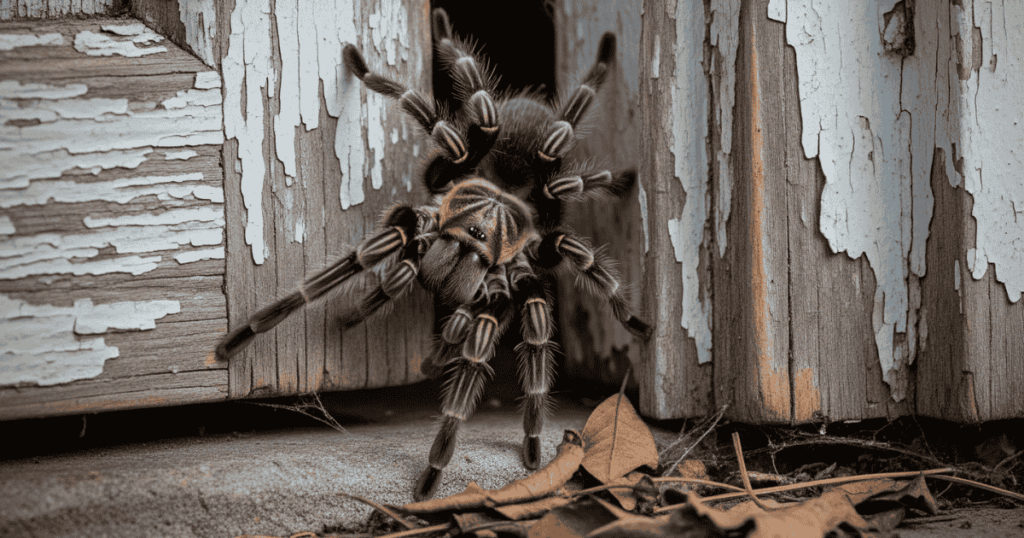
Here are the main ways spiders get into houses and what attracts spiders in the house, explained in clear points. The primary keyword “what attracts spiders in the house” is included for optimal relevance:
- Cracks in Walls and Foundation: One major answer to what attracts spiders in the house is access through tiny cracks or gaps in walls and foundation. Unsealed openings act as welcoming entry points.
- Gaps Under Doors: Homes often have spaces under doors where spiders can easily slip through, especially if there’s no weather stripping. These gaps are highly relevant for what attracts spiders in the house when food and shelter are present indoors.
- Unsealed Windows and Torn Screens: Poorly fitted windows or screens not only let air in but are a direct route for spiders looking for what attracts spiders in the house: easy access and internal insect activity.
- Attic Vents, Chimneys, and Exhausts: Spiders can enter through attic vents, uncapped chimneys, or unscreened exhausts. These spots are often overlooked but remain important for understanding what attracts spiders in the house.
- Utility Entry Points: Openings for plumbing, cables, or utility lines invite spiders inside, forming a part of what attracts spiders in the house, especially with high humidity or clutter nearby.
- Hitchhiking on Items: Firewood, outdoor furniture, moving boxes, or potted plants brought indoors may harbor spiders, helping to explain what attracts spiders in the house when such items are not checked properly.
- Homes With Insect Activity: If bugs or insects thrive inside, it is a leading cause of what attracts spiders in the house. Spiders follow their prey and settle close to food sources.
- Dampness and Clutter: Damp environments or clutter attract spiders seeking shelter. Moisture and hidden corners reinforce what attracts spiders in the house by providing both hydration and safety.
To minimize what attracts spiders in the house, regularly inspect and seal entry points, control dampness, declutter living spaces, and limit insect populations indoors.
7 Easy Ways to Get Rid of House Spiders
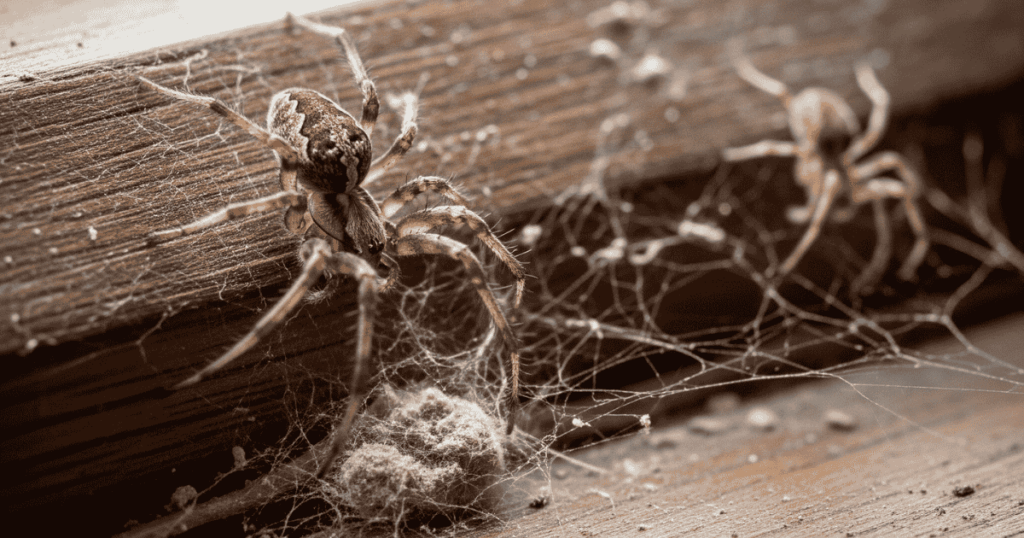
This section groups actions into routines that weaken the attractants steadily, rather than relying on one‑off fixes. Success comes from combining sanitation, structural exclusion, and targeted treatments. When routines align with what attracts spiders in the house, sightings drop and stay low over time.
1.Weekly cleaning routine
A predictable schedule clears webs, reduces insect food, and removes egg sacs before hatching. This simple routine attacks what attracts spiders in the house at the source.
- Vacuum ceilings, corners, under beds, and along baseboards.
- Wipe window sills and frames; remove dead insects.
- Clean kitchen floors and counters; empty recyclables.
- Brush down exterior eaves and porch corners monthly.
2.Lighting and night‑time strategies
Exterior lights pull moths and gnats, which invite spiders to build near doors and windows. Adjusting light color, brightness, and timing softens what attracts spiders in the house around entry points.
- Use yellow “bug” bulbs outdoors and warm indoor bulbs near windows.
- Add motion sensors so lights aren’t on continuously.
- Close blinds at dusk to reduce indoor light leakage.
- Move bright fixtures away from doors where practical.
3.Indoor plants and micro‑habitats
Dense foliage, pebble trays, and frequently watered planters can harbor small insects. Managing plant care reduces the micro‑ecosystems that build what attracts spiders in the house.
- Inspect leaves for aphids and gnats; prune dead growth.
- Let soil dry between waterings when possible.
- Use sticky traps for fungus gnats near planters.
- Keep plants away from walls and corners to limit web anchors.
4.Laundry, storage, and textiles
Piles of laundry, fabric storage, and undisturbed textiles create shelter. Simple habits remove hidden web anchors and reduce what attracts spiders in the house.
- Avoid floor piles; use hampers with lids.
- Store seasonal fabrics in sealed bins.
- Shake out items from closets and storage periodically.
- Vacuum closet floors and corners monthly.
5.Safe and targeted control methods
Control works best when paired with prevention; each tool has a place if used deliberately. Focus on least disruptive methods first, then escalate as needed. This blended approach shifts what attracts spiders in the house toward a less favorable environment.
Mechanical and physical controls
Physical removal is immediate, residue‑free, and effective when paired with sealing and cleaning. It lowers the baseline of what attracts spiders in the house without adding chemicals.
- Vacuum webs, spiders, and egg sacs; empty the canister outdoors.
- Place sticky traps along baseboards and behind furniture to monitor hotspots.
- Install door sweeps and repair screens to stop new arrivals.
- Use weather‑resistant caulk to seal exterior cracks.
6.Natural repellents and preventive treatments
Some scents and contact solutions help in entry zones and known hotspots. These reduce pressure without depending on broad spraying. Used regularly, they chip away at what attracts spiders in the house.
- Peppermint, eucalyptus, or tea tree oil: mix 10–15 drops in water with a little dish soap; spray frames and thresholds.
- Vinegar solution (1:1 water:vinegar) for sills and corners; reapply weekly.
- Diatomaceous earth (food‑grade) in dry voids where moisture isn’t an issue; avoid HVAC intakes.
- Sticky barriers around porch light posts and fence lines to deter web anchors.
7.Insect control to starve spiders
Starving spiders by managing insect populations is the fastest way to reduce webs. When the prey goes, the predators move. This is the heart of changing what attracts spiders in the house.
- Use drain gel cleaners for sink and floor drains weekly until gnats subside.
- Keep lids on trash and compost; rinse containers before recycling.
- Address pantry pests with sealed jars; discard infested items.
- Treat outdoor standing water and gutters to reduce mosquitoes.
Where do spiders hide? – 4 Common Hotspots
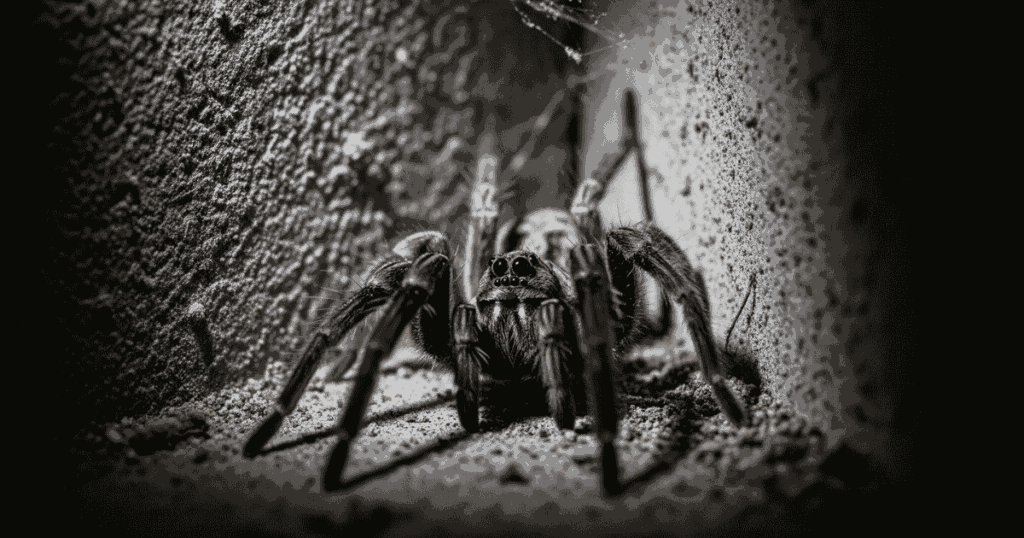
Even tidy homes have trouble spots that repeatedly gather webs. This section pinpoints the places most likely to harbor activity. Addressing these micro‑environments shifts what attracts spiders in the house at the root.
1.Bathrooms and laundry rooms
Humidity and drains are the draw. Keep vents working and surfaces dry. Treat drains and wipe ceiling corners weekly.
- Run fans for 20 minutes post‑shower.
- Squeegee glass and tile to cut moisture.
- Use drain treatments to block gnats and flies.
2.Kitchens and pantries
Food residue and produce invite insects first, spiders second. A strict cleaning schedule matters more than occasional deep cleans.
- Wipe counters nightly; sweep floors.
- Store grains and snacks in sealed containers.
- Clean under the fridge and stove monthly.
3.Basements, garages, and storage
Low light, clutter, and foundation gaps create ideal harborage. Better lighting, elevated storage, and sealing help cut what attracts spiders in the house.
- Install bright, enclosed fixtures to reduce undisturbed corners.
- Use shelving to lift boxes off floors.
- Seal utility penetrations with foam or caulk.
4.Doors, porches, and exterior lights
Flying insects circle lights and screens, drawing spiders to build nearby. Move lights, change bulbs, and clean fixtures regularly.
- Choose yellow/warm LEDs with lower UV.
- Add motion sensors and limit all‑night lighting.
- Brush away webs weekly to discourage rebuilding.
Table: Indoor hotspots and fixes
| Hotspot | Why it attracts spiders | Quick fix |
| Bathroom corners | Humidity and gnats | Vent fans, dehumidify, drain gel |
| Kitchen window | Night insects, food residue | Warm bulbs, clean sills, sealed screens |
| Basement storage | Clutter and gaps | Plastic bins, elevate, seal penetrations |
| Porch light | Flying insects | Yellow bulbs, motion sensor, de‑web weekly |
| Garage door gap | Entry route | New sweep, weather‑strip, seal cracks |
Table: Outdoor contributors and actions
| Outdoor factor | Effect | Action |
| Wood piles near wall | Harborage and prey | Move 20–30 ft, elevate |
| Dense shrubs at siding | Hidden web anchors | Trim back 12–18 inches |
| Standing water | Mosquito/gnat breeding | Drain, clean gutters, fix leaks |
| All‑night lighting | Attracts moths/gnats | Timers or motion sensors |
| Cluttered porch | Undisturbed web sites | Store items, sweep weekly |
Preventive measures to keep spiders away
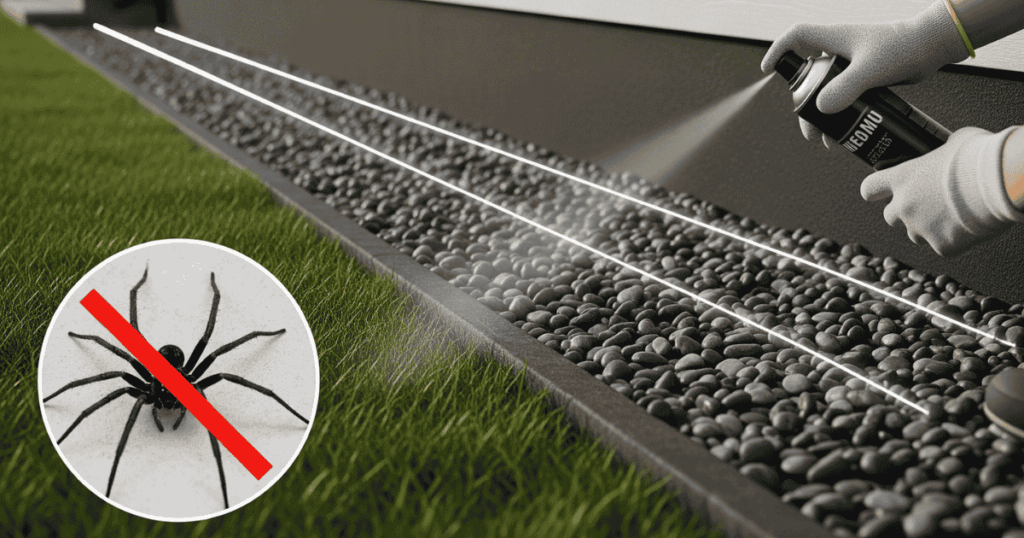
Knowing what attracts spiders in the house is half the battle, taking preventive actions is where you win.
Decluttering and Organized Living
A tidy house reduces potential spider havens. By clearing unused corners, you close off their hiding spots.
Tips:
- Regularly vacuum under beds and sofas.
- Rotate stored items in basements.
- Discard unnecessary paper piles and cardboard.
Pest Control for Insects
If insects are food, then without them spiders eventually move to better grounds. Ensure proper pest management strategies:
- Use fly traps or screens over windows.
- Conduct regular pest spraying if infestations occur.
- Seal open food containers to avoid attracting insects.
Managing Moisture
Spiders love humidity, so keeping your home dry is crucial.
- Fix leaking faucets.
- Use dehumidifiers in damp basements.
- Ensure proper bathroom ventilation.
Limiting Entry Points
Practical barrier-setting keeps new spiders from roaming inside.
Table: Entry Point Solutions
| Entry Route | Prevention Tip |
| Window gaps | Apply sealing caulk |
| Door bottoms | Install weather stripping |
| Attic vents | Mesh screens |
| Wall cracks | Professional sealing |
By eliminating entry zones, you reduce additional spider population growth inside.
Natural Repellents and Safe Alternatives
For those preferring chemical-free options, natural remedies can be highly effective. Some repellents double as home fresheners.
Examples of spider repellents:
- Peppermint oil spray
- Vinegar-water solutions
- Chestnuts placed near corners
- Citrus peels rubbed on entryways
- Eucalyptus leaves
Using these methods targets what attracts spiders in the house by directly making the space less welcoming.
When to consider professional help?
If daily sightings persist, webs return within days, or venomous species are present, bring in a licensed technician. A pro can map entry routes, identify species, and treat discreetly. This step rebalances what attracts spiders in the house by removing entrenched populations and the insect base supporting them.
- Ask for an inspection report with conducive conditions listed.
- Combine exterior de‑webbing with perimeter treatments and sealing.
- Schedule follow‑ups to ensure egg cycles don’t repopulate.
For comprehensive and hassle-free Spider removal and long-term pest prevention, trust the professionals at Antipest Office. Visit us at the Antipest Office, Our trained technicians use safe and effective methods to protect your home and business. For service bookings and consultations, call us at +91 9819018398 .
Seasonal patterns and outdoor links that Attracts Spiders in the House
Outdoors and indoors are connected; seasonal shifts drive behavior, and yard conditions ripple inside. Tuning outdoor maintenance is essential for tackling what attracts spiders in the house long term.
Spring and summer: growth and prey booms
Insects surge, so perimeter focus matters most. Preventing exterior webs near doors and windows keeps spiders from drifting indoors. Keep pressure low by limiting what attracts spiders in the house just beyond the threshold.
- Trim shrubs away from siding; keep mulch a few inches below sill height.
- Move firewood stacks 20–30feet from the structure and elevate them.
- Clear clutter from porches; store rarely used items in sealed bins.
- Maintain gutters; fix irrigation leaks that create damp zones.
Fall: warmth and shelter searches
Cooler nights push spiders to seek warm voids and quiet corners. This is the season to double‑down on sealing and attic/garage checks. You’ll control what attracts spiders in the house before winter nesting.
- Install fresh weather‑stripping; repair thresholds.
- Inspect soffits, gable vents, and attic hatches for gaps.
- Add door sweeps to garage and side doors.
- Increase vacuuming in storage areas and guest rooms.
Winter: maintenance and monitoring
Spiders slow down, which is a chance to remove lingering webs and eggs and to fix structural issues. Keeping up small tasks weakens what attracts spiders in the house for the spring.
- Inspect basements and utility rooms monthly.
- Clean behind appliances; check under sinks for drips.
- Replace any torn screens or cracked caulking found in fall.
- Keep dehumidifiers running in damp zones.
Myths vs. Facts About Spiders in the House
Before concluding, it’s worth dispelling myths. Many people still misunderstand spider behavior at home.
Table: Common Myths vs Facts
| Myth | Fact |
| Spiders bite humans often | Most species avoid humans and only bite in self-defense. |
| Clean houses don’t get spiders | Even spotless homes attract spiders if insects or moisture exist. |
| Killing spiders repels others | Dead spiders don’t impact overall attraction factors. |
| Spiders enter only in winter | They can enter any season depending on prey availability. |
Disentangling myths helps maintain focus on actual triggers when asking what attracts spiders in the house.
Conclusion
The fastest way to curb sightings is to remove the reasons they settle: prey insects, moisture, clutter, and easy entry. By focusing on ventilation, dehumidifying, sealing, and weekly cleaning, the home becomes less welcoming and webs stop reappearing. Lighting changes and trash discipline starve the food chain, while simple tools like sticky traps and vacuuming handle stragglers.
Understanding what attracts spiders in the house, and methodically removing those incentives, delivers lasting results without heavy chemical use. Make small improvements each week, and what attracts spiders in the house won’t control the space anymore.
What Attracts Spiders in the House? – FAQs
What attracts spiders in the house the most?
Consistent prey insects (flies, mosquitoes, moths, cockroaches), moisture, undisturbed cluttered corners, and easy entry gaps attract spiders indoors.
What attracts spiders in the house during rainy or humid weather?
Higher humidity and an influx of flying insects near lights and windows after rain make interiors ideal for web-building and hunting.
What attracts spiders in the house to bathrooms and basements?
Damp air, leaky pipes, and dark corners provide moisture and shelter, while drain gnats and other insects supply steady food.
What attracts spiders in the house to bedrooms and closets?
Low traffic, fabric piles, and dark shelves offer safe harborage; night lighting can also pull moths near windows, feeding nearby spiders.
What attracts spiders in the house to kitchens and pantries?
Food residues and produce draw insects first; spiders follow the prey, especially around trash, recycling, and window sills.
What attracts spiders in the house through doors and windows?
Gaps, torn screens, and bright entry lighting invite insects and give spiders both access and a steady food stream.
What attracts spiders in the house from the yard?
Wood piles against walls, dense shrubs touching siding, standing water, and all-night lighting create exterior prey zones that spill indoors.
What attracts spiders in the house and how can this be stopped quickly?
Starve them by reducing insects (fix moisture, manage lights, seal gaps), declutter corners, and vacuum webs and egg sacs weekly.
What attracts spiders in the house in fall and winter?
Cooling temperatures push them toward warm, quiet voids; sealing weather-stripping and attic/garage gaps reduces migrations.
What attracts spiders in the house in spring and summer?
Surges in flying insects and outdoor-to-indoor movement near doors, porches, and window lights increase web activity.

